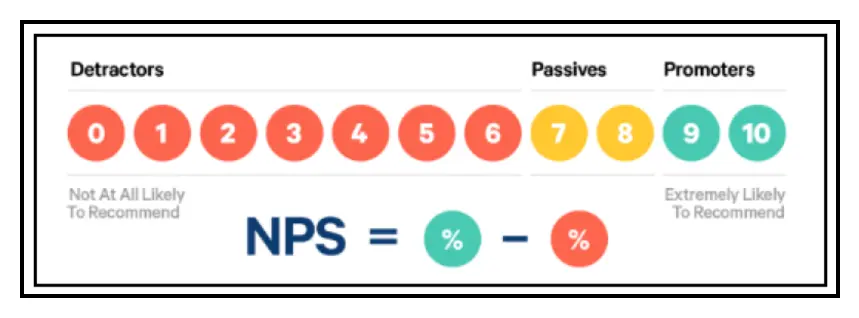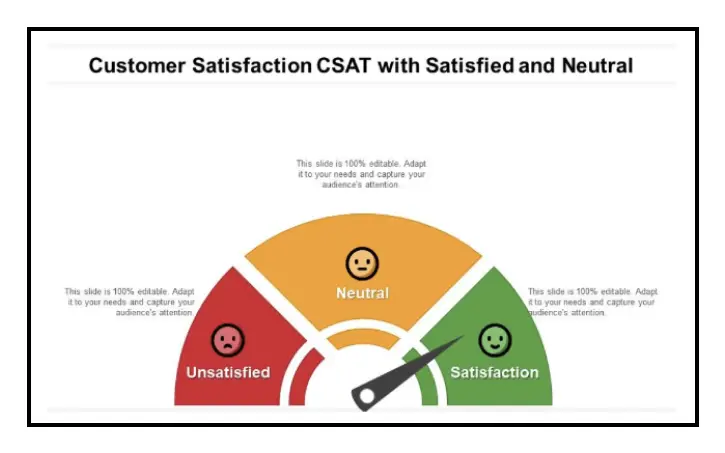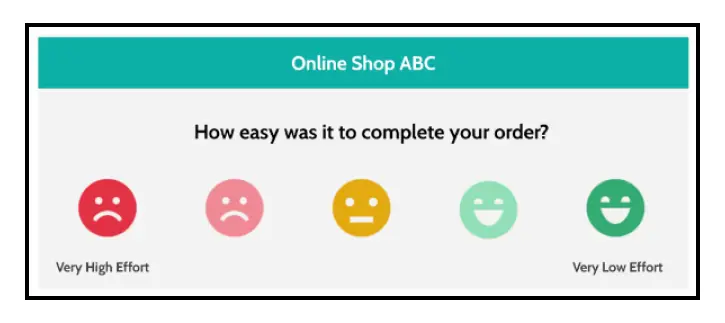In today’s digital environment where people are buying everything from groceries to vacations online, having high customer engagement is the key to an online DTC brand’s business growth. With a new generation taking the reins of the economy, and one-third of dissatisfied customers aged 23 to 38 quickly switching to a different brand, ensuring meaningful customer engagement is now more important than ever. After all, with everything available at a click of a button, today’s consumer is spoilt for innumerable choices.
So what do you do as a business to ensure your customers are engaged enough? Tracking your customer engagement KPIs (Key performance indicators) will help you identify gaps if any and plug them in time and ensure they do not switch over to a competitor. But what is customer engagement and what customer engagement KPIs or metrics should a business be tracking?
Customer engagement – What is it all about?
In layman’s terms, customer engagement is tracking or measuring a customer’s engagement with a brand’s offerings (product/service). It is a two-way interaction between a company and its customer base. Delivering a positive customer experience to customers translates to them recommending your brand to their friends and family circle. A business can engage with its customers through various channels such as websites, social media channels, forums, email, newsletters, blogs, videos, third-party websites, etc. When a customer likes or comments or shares your social media posts, writes a review on your website or on any other review platform, exchanges emails, etc. all of these are a form of customer engagement.
Customer engagement metrics: Metrics for customer engagement are data points that can be analyzed to learn more about your customer base and their purchasing habits. These metrics are useful for determining the extent to which your business is reaching its intended audience and for identifying any areas in which it may be falling short. A brand can measure customer engagement by taking various metrics also known as KPIs into consideration. Keeping a track of customer engagement KPIs gives a brand access to information that can enable them to enhance customer engagement and drive business growth.
16 Effective Customer Engagement Metrics DTC Brands Should Monitor
Customer engagement metrics are like a report card on how your business is performing with respect to retaining and keeping its customers engaged. If you are struggling with keeping your customers engaged, keeping a track of the below-mentioned KPIs can help. Let’s delve right in!
1) NPS – Net Promoter Score
kpis-brands-should-be-monitoring-nps
Regarded as the gold standard in measuring customer experience Net Promoter Score (NPS) is a metric to measure customer loyalty and satisfaction. Developed in 2003, NPS is now widely used by businesses to understand how their customers perceive them. NPS surveys include a single question asking customers how likely they are to recommend your product or service to others on a scale of 0 to 10.
Why track NPS: It is a great way to measure online engagement, customer satisfaction, and loyalty, and identify new opportunities where offerings can be improved. DTC brands can use NPS data to enhance customer service, foster brand loyalty, and promote growth.
Hot Tips ( How to improve NPS)
- Focus on better customer experience
- Deliver great customer support
- Act on customer feedback
2) Customer satisfaction score (CSAT)
kpis-brands-should-be-monitoring-customer-satisfaction-score
CSAT is probably one of the most popular metrics used by companies to track customer interaction. Customers are asked to rate their experience based on the latest interaction they have had with a business. It could be after a phone call, a purchase, or even a chat interaction. The number of customers who rated the product or service as satisfactory (if the rating is on a scale of 1 to 5, only customers who rated a 4 or 5 will count as satisfactory) is divided by the total number of responses and then multiplied by 100 to arrive at the CSAT percentage.
Why track CSAT: Tracking CSAT helps identify customer pain points and gives a clear picture of how well is a business aligned with customer expectations. DTC brands can improve their customer service and enhance their products and services to meet customer expectations, with the help of CSAT scores.
Hot tips (How to improve CSAT)
- Act on the customer feedback
- Follow-up with customers once you have acted on the feedback
- Enhance your offering to meet customer expectations
3) Customer effort score (CES)
kpis-brands-should-be-monitoring-customer-effort-score
Convenience reigns supreme for consumers today which has led to a boom in online DTC business and home deliveries. CES typically is an indicator of how easy or difficult it was for a customer to say place an order or connect with a customer care executive or navigate a website etc.
Why track CES: A CES survey gives real-time feedback on your processes, systems, and customer support teams. It helps identify the bottlenecks and resolve them by transitioning to seamless customer experiences.
Hot tips (How to improve CES)
- Identify the root cause and fix it
- Test fixed processes from time to time
4) User action
User action measurement refers to tracking the actions users engage in when on your website. These user actions primarily depend on the product or service your company offers. Activities like the time a user spends on your website, links he visits, products or services he/she checks out, adding products to a cart, booking a demo, or watching a video on your website qualify as a user action.
Why track user action: Tracking user actions helps you gauge a customer’s likes, preferences, and overall online behavior and persona. This way you can make suggestions that might interest him and send personalized e-mails with attractive offers nudging them to engage more with your brand.
Hot tips (How to improve user action)
- Use an effective email drip campaign
- Simplify customer effort
- Provide live chat support once they are on your website
- Self-help knowledge bank
5) Session time
Session time refers to the total duration a visitor spends on your website from logging in to logging out. When a user logs in to your website and after sometime becomes inactive, it means the session has ended. Google Analytics is the industry standard to determine session duration.
Why track session time: It helps measure user engagement. Is your customer or prospective customer spending time on your website/app or are they leaving straight away? DTC brands can combine session time data with other metrics to determine whether their offering is delivering any value to customers.
Hot tips (How to improve session time)
- Use of attractive and engaging images, videos, and infographics
- Easy to navigate user interface
- Best performing content on top
- Content that’s relevant for your target consumer
6) Page visit frequency
Page visit frequency measures the number of people visiting your website repeatedly on the same day. This metric helps you gauge what kind of content/product/service is having a higher engagement rate.
Why track page visit frequency: This metric helps a business identify the kind of content/product/service a customer finds valuable and relevant. Coupled with other metrics, this can help a business identify which product/service to promote to the customer.
Hot tips (How to improve page visit frequency)
- Update content frequently
- Launch new products/services frequently
- Run weekly sales like Special Wednesday
7) Conversion rate
This refers to the number of customers actually taking the intended action like downloading a report, completing a purchase, or signing up for a subscription.
Why track conversion rate: Tracking conversion rate helps identify which channel or content form works best for your brand. By knowing which channel triggers more interest and drives more conversions, you can decide where to put more effort, and design more effective customer engagement strategies.
Hot tips (How to improve conversion rate)
- Map content for each stage of customer sales journey
- Prioritize ease of navigation for minimal customer effort
- Collect regular user feedback on website/app performance
8) Social media engagement
In today’s era social media presence and engagement is a non-negotiable for any online or offline DTC brand. With nearly 4.6 billion of the global population on social media, it will be a disaster to not engage and track your social media engagement. Social media is a great platform to establish a direct connection with your customers and get first-hand information on how your target consumers actually perceive your brand.
Why track social media engagement: It is a true reflection of how people perceive your brand and how they prefer to interact with you. Social media engagement metrics help analyze what channels/products/services/content forms have a higher engagement rate, enabling you to design more relevant strategies.
Hot tips (How to improve social media engagement)
- Create posts that make an impact and add relevant hashtags for better reach
- Post content that is authentic
- Always respond to both positive and negative comments
- Share a healthy mix of educational and promotional content
9) Bounce rate
It refers to the percentage of visitors who come to a website but leave almost immediately by just looking at one page. A high bounce rate is a sign of a not-so-attractive or easy-to-navigate website or app.
Why track bounce rate: It is a critical indicator of your website’s content quality as well as navigation convenience. There is nothing to worry about if the bounce rate is low, but a high bounce rate is a sign that your website is not doing the job you intend.
Hot tips (How to ensure a low bounce rate)
- Create a visually attractive website
- Make sure it is easy to navigate
- Post SEO optimized quality content
10) Pageviews
Pageview is an indicator of the traffic on a website. It measures how many users visit a particular page on your website. A high pageview is an indicator that a lot of people are interested in what you offer as a brand.
Why track pageviews: Tracking pageviews can help DTC brands drive more personalized marketing campaigns and social media campaigns.
Hot tips (How to ensure high pageviews)
- Have a website that’s both desktop and mobile friendly
- Fixed navigation bar and sidebar for ease of use
- Social share buttons
- Make sure to post content relevant to your target audience
11) Email open rate
Once a person receives an email in his/her mailbox, the number of times he/she opens it is referred to as the email open rate. One can use certain tools to track email open rates.
Why track email open rate: DTC brands can get an idea of whether the prospective finds their offering of any value or not. A high email open rate is an indication that the recipient likes your offering, a low rate on the other hand may imply two things.
- You need to re-think or re-design your email content
- You need to tweak your product or service by offering
Hot tips (How to increase email open rate)
- Conduct A/B testing to see what works
- Crisp and clear emails
- Strategically placed CTA
12) Email click-through rate
The number of times recipients click the links you have shared in an email is the click-through rate, also known as CTR. It is calculated on the basis of the number of people who have clicked the links in your email at least once.
Why track CTR: Tracking CTR gives business owners an insight into customer preferences. CTR metrics will help brands design a more personalized and relevant email marketing strategy.
Hot tips (How to increase CTR)
- Sent a well-formatted and easy-to-read email
- Time your emails right, and send them preferably on weekends when people have time to attend to personal business
- Personalization is the key
13) Push notification open rate
Refers to tracking the number of recipients who opened a push notification after it was sent.
14) SMS/messaging open rate
Refers to tracking the number of recipients who opened an SMS after I was sent.
Why track Push notifications and SMS rate: With a total of 6 billion smartphone users worldwide not undertaking mobile marketing and tracking mobile initiatives is not an option anymore. Mobile marketing is an invaluable customer engagement channel.
15) Paid ads return on ad spend (ROAS)
ROAS is one of the most critical KPIs in online and mobile marketing which DTC brands must track. ROAS is the amount of revenue earned on every dollar spent on an ad campaign and the profit earned from ad expenses.
Why track ROAS: Omnichannel presence is the norm today. With DTCs running ad campaigns across multiple channels and platforms, tracking ROAS helps identify the channel that is giving the maximum return for every dollar spent.
Hot tips (How to increase ROAS)
- Allocate higher advertising budgets where ROAS is high
16) SEO, branded vs. non-branded traffic ratio
Tracking branded vs non-branded traffic ratio is important from an SEO (search engine optimization) perspective. Any traffic from a keyword phrase containing a branded term is branded organic traffic. For example, UberEATS is a popular food delivery app but not everyone will type the brand name correctly in the search bar.
Why track branded vs non-branded traffic ratio: Tracking branded vs non-branded traffic reflects on how strong your SEO content and technical SEO is and identifies factors that impact it. The purpose of SEO is to ultimately drive more traffic to your website.
Hot tip
- Use tools like SEMrush, Google Analytics, and Google Search Console
Closing words
Customer engagement is the bedrock of any successful marketing strategy. Tracking these metrics will help in putting together an effective and engaging marketing strategy.
You may also like
Essential resources for your success

























































